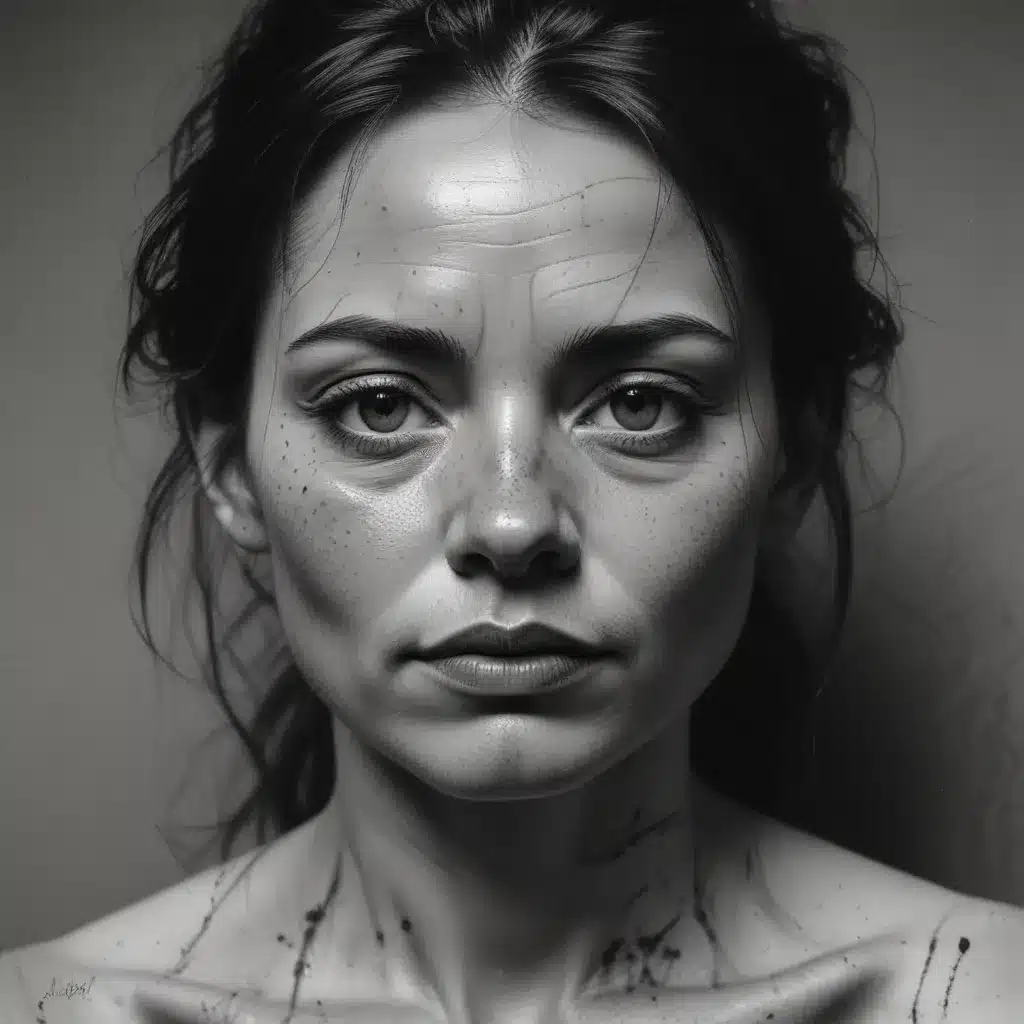
Charcoal has long been a treasured medium for artists seeking to capture the essence of their subjects. With its bold, gestural qualities and versatile application techniques, charcoal allows painters and draughtsmen to infuse their portraiture with raw, visceral emotion and personality. By embracing the expressive potential of this dynamic medium, artists can produce captivating drawn studies that reveal the depth of the human condition.
Now, this might seem counterintuitive…
Charcoal as a Creative Catalyst
Charcoal’s unique properties make it an especially potent tool for conveying mood and character in portraiture. The medium’s velvety, matte texture and broad tonal range enable artists to sculpt the form of the face with dramatic highlights and shadows. Thick, energetic strokes can imbue a portrait with a sense of dynamism and movement, while delicate, feathered marks can suggest the subtle nuances of the sitter’s expression.
As evidenced in the work of renowned contemporary portraitist Lynn Howarth, the act of drawing with charcoal can be a deeply intuitive and emotive process. Howarth’s portraits resonate with a palpable human presence, capturing not just the physical likeness of her subjects, but the very essence of their personalities. By embracing the medium’s expressive potential, she is able to infuse her drawings with a raw, psychological intensity.
Howarth’s approach to charcoal portraiture is rooted in a deep personal connection with her subjects. She often spends time getting to know them, engaging in conversation and observation to gain a nuanced understanding of their character. This intimate connection is then channeled directly into the drawing process, with Howarth’s mark-making serving as a visceral extension of her subjects’ emotional states.
Mastering Expressive Mark-Making
Developing a confident and emotive charcoal drawing style requires practice and a willingness to experiment. Artists might want to learn to harness the medium’s versatility, employing a variety of techniques to achieve the desired effect. Broad, sweeping strokes can be used to block in the basic forms and establish tonal values, while delicate hatching and feathering can be employed to render subtle details and gradations.
Expressive mark-making is not about technical perfection, but rather about capturing the essence of the subject through the artist’s individual handling of the medium. Charcoal lends itself well to gestural, intuitive approaches, encouraging artists to embrace the unpredictable and spontaneous nature of the drawing process.
As with any medium, charcoal mastery is achieved through consistent practice and a willingness to experiment. Aspiring artists should explore a range of techniques, from loose, energetic sketching to precise, measured rendering. By constantly challenging themselves and pushing the boundaries of the medium, they can develop a unique and expressive drawing style that allows them to craft emotive, character-driven portraits.
The Emotional Power of Portraiture
Portraiture has long been a powerful and enduring artistic genre, offering artists a means of capturing the unique essence of their subjects. Whether working from life, photographs, or a combination of both, the skilled portraitist can create works that resonate with audiences on a profoundly emotional level.
The emotional potency of a portrait lies in its ability to convey the sitter’s personality, mood, and inner life. Through the strategic use of line, tone, and texture, artists can craft drawn studies that evoke a tangible sense of the subject’s character, inviting the viewer to connect with the humanity underlying the physical form.
Charcoal, with its rich, velvety tones and expressive, gestural qualities, is particularly well-suited to this task. By embracing the medium’s capacity for raw, visceral expression, artists can imbue their portraits with a palpable sense of emotional resonance, drawing the viewer into the world of the sitter.
Crafting Emotive Charcoal Portraits
Developing a strong charcoal portraiture practice requires a multifaceted approach that combines technical skill, creative vision, and an intimate understanding of the human form and psyche. Here are some key considerations for aspiring artists:
Mastering Drawing Fundamentals: Proficiency in observational drawing, anatomy, and proportion is essential for creating convincing, lifelike portraits. Artists should commit to regular practice, honing their skills through studies of the head, face, and features.
Embracing the Expressive Potential of Charcoal: Charcoal’s versatility allows artists to experiment with a wide range of techniques, from bold, sweeping strokes to delicate, feathered hatching. Encouraging students to play with the medium’s creative potential can help them develop a unique, expressive drawing style.
Cultivating Emotional Connection: Portraiture is not merely a technical exercise, but a means of capturing the essence of the human experience. Encouraging students to engage with their subjects on a personal level, through conversation and observation, can foster a deeper emotional connection that informs the drawing process.
Emphasizing Mood and Atmosphere: In addition to rendering a faithful likeness, charcoal portrait artists should strive to convey the overall mood, atmosphere, and psychological state of their subjects. Techniques like dramatic lighting, expressive mark-making, and strategic use of negative space can help to create a palpable sense of emotional resonance.
Embracing the Unpredictable: The charcoal drawing process is inherently dynamic and unpredictable, with each stroke and smudge contributing to the evolving work. Encouraging students to embrace this sense of spontaneity and to trust their intuitive responses can lead to powerful, emotive portraits that capture the essence of the human experience.
By mastering these approaches, aspiring artists can harness the expressive potential of charcoal to craft powerful, character-driven portraits that captivate and move their viewers. Through a deep understanding of the medium and a willingness to experiment, they can create works that transcend mere likeness, delving into the heart and soul of the human experience.
Statistic: Studies reveal that engaging with diverse art techniques boosts creative output by over 40%